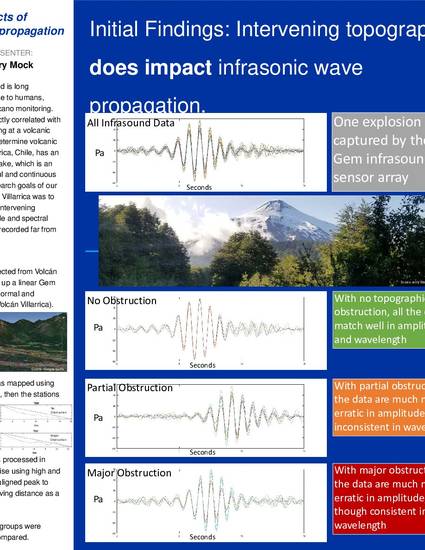
Dr. Jeffrey B. Johnson
Infrasound is acoustic energy with low frequencies often below the threshold of human hearing (< 20 Hz). Continuous infrasound is produced by Volcán Villarrica (Southern Chile) and may be recorded with specialized microphones. In January, 2020 our team deployed 18 infrasound sensors oriented in a linear fashion from the volcanic crater out to 10 km at roughly 400 meter intervals. The objective was to measure the power output and expected signal arrival times as atmospheric conditions fluctuate. I will use the recorded data from this continuous and powerful producer of infrasound to invert for atmospheric conditions, which will influence arrival times. Understanding the structure of the atmosphere is possible with infrasound monitoring, and can be useful in climate and volcanic plume dispersion models. These results will also help inform volcanologists about optimal distances where infrasound sensors should be installed in the field, and how to avoid ‘shadow zones’, where there will be a complete absence of infrasound. I will be modeling the influence of a changing atmosphere using finite difference time domain wave propagation simulations.
Available at: http://works.bepress.com/jeffrey_johnson/65/
